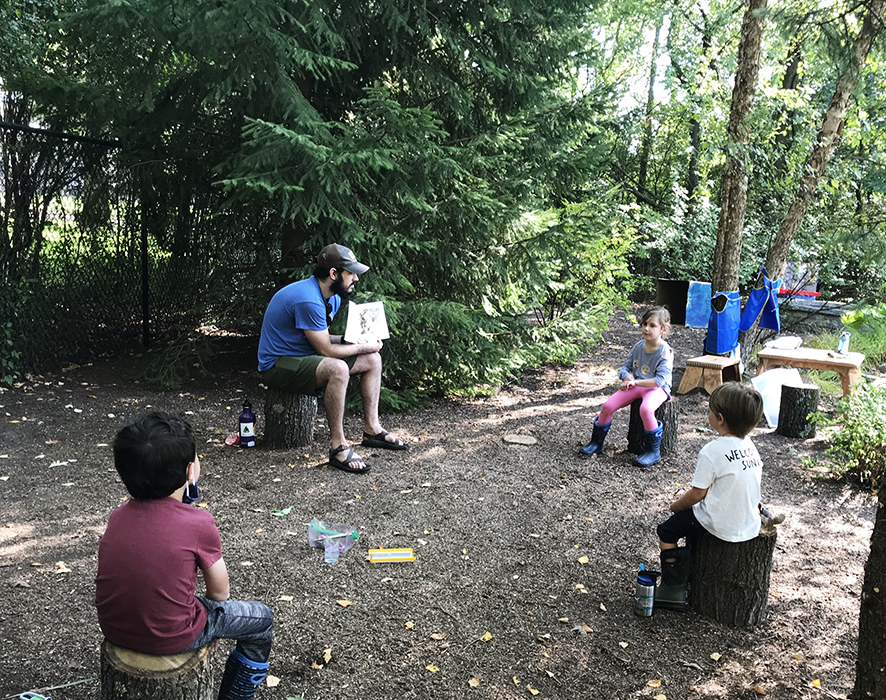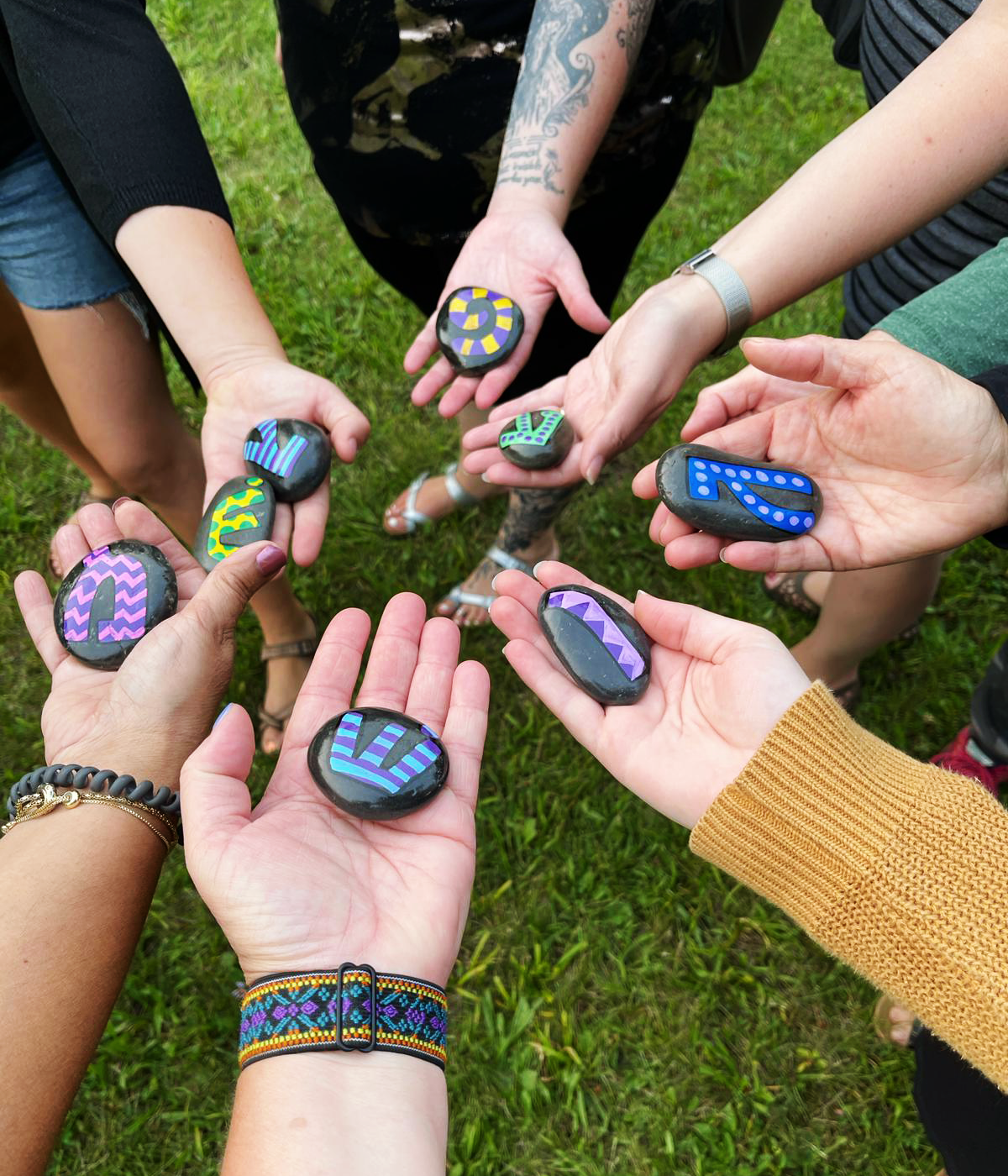
Written by Carol Kerman,
Storyteller & Instructor at Ta’am Teva
We all love storytelling at Ta’am Teva. Storytelling is not only entertaining and fun, but gives the children opportunities to practice early childhood literacy skills!
Bruce the Goose
I recently told the story of Bruce the Goose, using a lovely goose puppet. Bruce the Goose decides not to heed the wisdom of his mother and fly south for the winter. Instead, he stays back alone and soon realizes he made a big mistake!
Not only are the children entertained by Bruce’s stubbornness, they also learn some valuable lessons:
• Many animals, like geese, migrate.
• Children have to use their imaginations because Bruce is a puppet and not a picture in a book. Children have to visualize the story using what they hear me say. For example, when Bruce’s head gets stuck in rabbit’s hole, the children become artists painting the scene in their mind.
• And finally, the most important lesson of all – listen to mom because she’s always right!
The Snowflake Story
Another story our children love is the Snowflake story. This story is told in rhyme. Rhyming, as we know from Mother Goose, is a pre-literacy skill that will help with reading. As babies, many of us were sung chants and songs with rhymes in them. These help infants learn about language and meaning. The same idea applies to storytelling!
When the kiddos hear rhyming patterns, it can help them discriminate sounds, which will help them later with phonics and sight words. Sometimes, I purposely leave off the last word of the sentence in a chant so the children can begin to hear the sound and predict the word that is missing.
The Little Pine Tree
Storytelling helps improve listening skills, memory, and sequencing. Many participatory stories include repetitive chants, noises, or gestures. The children learn to listen for their cue and remember their part. In The Little Pine Tree story, the children have to listen for their part:
“Little tree, little tree,
I grant you your wish.
1 -2 – 3”.
Through storytelling, we are building strong audience skills and learning about what our bodies look and feel like when we are being good listeners. We think about how our body language shows someone else that we are listening!
And finally, at the end of each story, the children feel a sense of wholeness and calm as Bruce the Goose’s mother returns for him, the snowflake teaches that each of us is unique and the pine tree is happy being just the way she was made, needles and all. And they all lived happily ever after!


Written by Carol Kerman,
Storyteller & Instructor at Ta’am Teva
We all love storytelling at Ta’am Teva. Storytelling is not only entertaining and fun, but gives the children opportunities to practice early childhood literacy skills!
Bruce the Goose
I recently told the story of Bruce the Goose, using a lovely goose puppet. Bruce the Goose decides not to heed the wisdom of his mother and fly south for the winter. Instead, he stays back alone and soon realizes he made a big mistake!
Not only are the children entertained by Bruce’s stubbornness, they also learn some valuable lessons:
• Many animals, like geese, migrate.
• Children have to use their imaginations because Bruce is a puppet and not a picture in a book. Children have to visualize the story using what they hear me say. For example, when Bruce’s head gets stuck in rabbit’s hole, the children become artists painting the scene in their mind.
• And finally, the most important lesson of all – listen to mom because she’s always right!
The Snowflake Story
Another story our children love is the Snowflake story. This story is told in rhyme. Rhyming, as we know from Mother Goose, is a pre-literacy skill that will help with reading. As babies, many of us were sung chants and songs with rhymes in them. These help infants learn about language and meaning. The same idea applies to storytelling!
When the kiddos hear rhyming patterns, it can help them discriminate sounds, which will help them later with phonics and sight words. Sometimes, I purposely leave off the last word of the sentence in a chant so the children can begin to hear the sound and predict the word that is missing.
The Little Pine Tree
Storytelling helps improve listening skills, memory, and sequencing. Many participatory stories include repetitive chants, noises, or gestures. The children learn to listen for their cue and remember their part. In The Little Pine Tree story, the children have to listen for their part:
“Little tree, little tree,
I grant you your wish.
1 -2 – 3”.
Through storytelling, we are building strong audience skills and learning about what our bodies look and feel like when we are being good listeners. We think about how our body language shows someone else that we are listening!
And finally, at the end of each story, the children feel a sense of wholeness and calm as Bruce the Goose’s mother returns for him, the snowflake teaches that each of us is unique and the pine tree is happy being just the way she was made, needles and all. And they all lived happily ever after!


